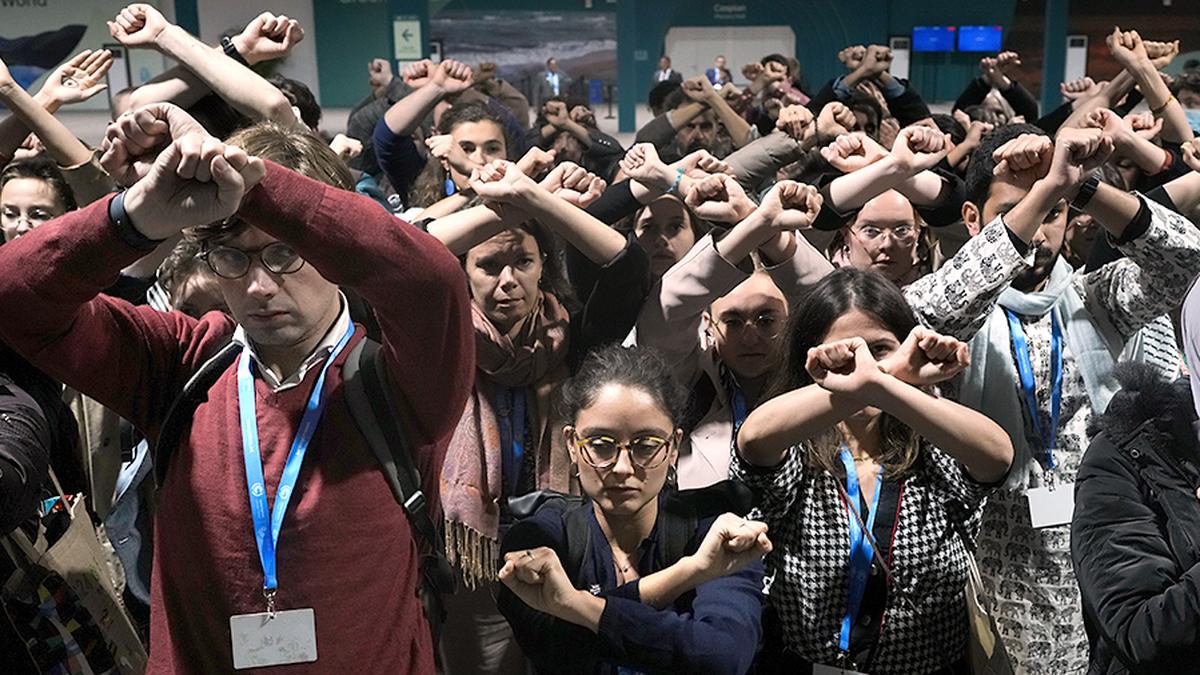Israeli Prime Minister Benjamin Netanyahu said Thursday (October 17, 2024) that the killing of Hamas chief Yahya Sinwar in the Gaza Strip was the “beginning of the end” of the year-long war in the Palestinian territory.
The Israeli military said that after a lengthy hunt, troops had on Wednesday (October 16, 2024) “eliminated Yahya Sinwar, the leader of the Hamas terrorist organisation, in an operation in the southern Gaza Strip”.
Hamas has not confirmed his death.
Also read | No ceasefire yet, says Israeli envoy, defends Israel war a year after October 7 attacks
Mr. Netanyahu, who vowed to crush Hamas at the start of the war, hailed Sinwar’s killing, saying: “While this is not the end of the war in Gaza, it’s the beginning of the end.”
He had earlier called Sinwar’s death an “important landmark in the decline of the evil rule of Hamas”.
The chief of Hamas in Gaza at the time of the October 7 attack that sparked the current war, Sinwar became the militant group’s overall leader after the killing in July of its political chief, Ismail Haniyeh.
He is said to have masterminded the October 7 attack, the deadliest in Israeli history, which resulted in the deaths of 1,206 people, mostly civilians, according to an AFP tally of official Israeli figures that includes hostages killed in captivity.
In Pictures: Israel-Hamas war — a year on
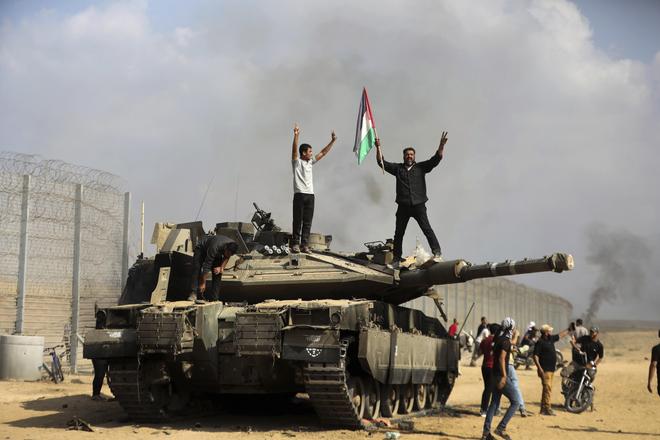
October 7, 2023: Hamas militants stormed across the border from Gaza into Israel in what would become the deadliest attack in the country’s history. At the end of the Jewish holiday of Sukkot, the militants launched their assault by land, air, and sea. Militants abducted 251 hostages on October 7, 97 of whom are still captive in Gaza, including 33 the Israeli military has said are dead.
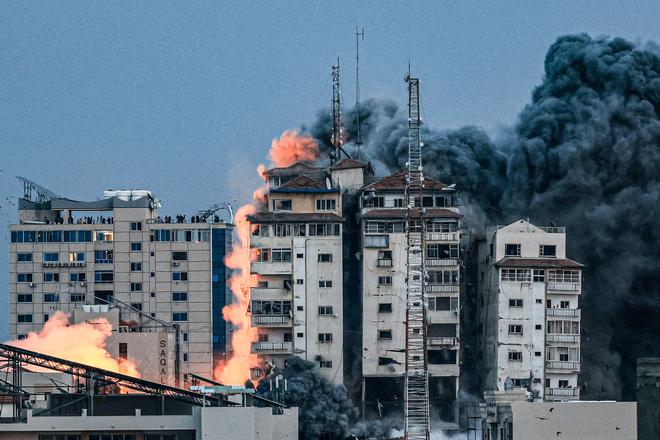
Soon after the attack, Israeli Prime Minister Benjamin Netanyahu announced “We are at war.” He declared a mass army mobilization. “Not an ‘operation,’ not a ‘round,’ but at war.” Israel battered Gaza on October 8 after suffering its bloodiest attack in decades, when Hamas fighters rampaged through Israeli towns killing 600 and abducting dozens more, as the spiralling violence threatened a major new war in West Asia. Israeli air strikes hit housing blocks, tunnels, a mosque, and the homes of Hamas officials in Gaza, killing more than 370 people, including 20 children, as Mr. Netanyahu vowed “mighty vengeance for this black day”.
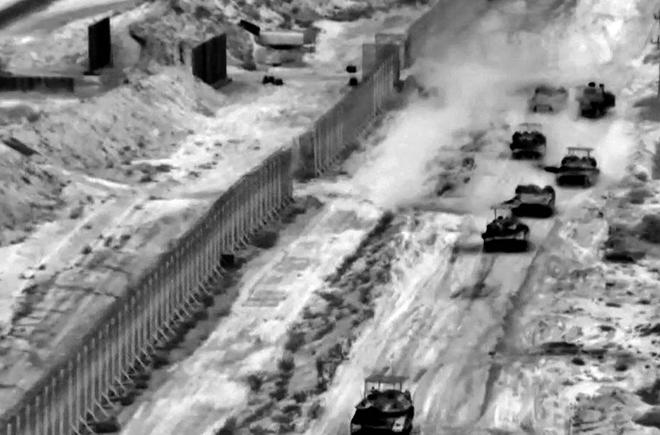
October 27, 2023: Internet and phone services collapsed in the Gaza Strip under intensified bombardment, largely cutting off its 2.3 million people from the outside world and each other, as Israel’s military “expanded” its ground operations in the besieged territory. The military’s announcement signalled it was moving closer to an all-out invasion of Gaza, where it has vowed to crush the ruling Hamas group after its bloody incursion in southern Israel three weeks ago. This screen grab taken from handout footage released by the Israeli army on October 26, 2023, shows a “targeted raid” in northern Gaza with tanks and infantry.
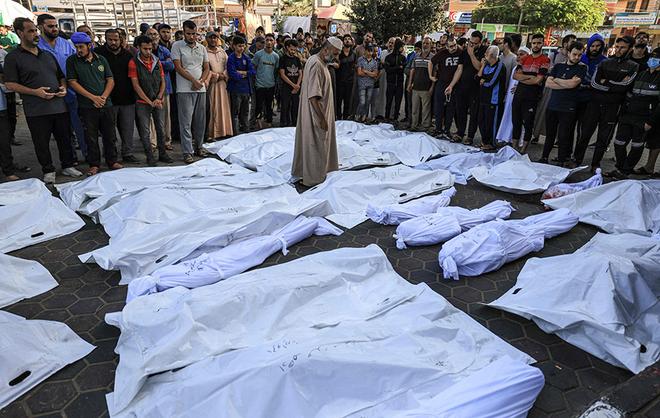
November 2023: Israeli forces struck near several hospitals in Gaza City as the military pushed deeper into dense urban neighborhoods in its battle with Hamas militants, prompting increasing numbers of civilians to flee toward the south of the besieged territory. Israel accused Hamas fighters of hiding in hospitals and using the Shifa Hospital complex as its main command center, which the militant group and hospital staff deny, saying Israel is creating a pretext to strike it. In this photo from November 6, 2023, a man walks between the bodies wrapped in shrouds of those killed in Israeli bombardment in Deir Balah in the central Gaza Strip, at the Shuhada Al-Aqsa hospital in the same city.

November 24, 2023: After 48 days of gunfire and bombardment that claimed thousands of lives, a four-day truce in the Israel-Hamas war began. Palestinian prisoners (wearing grey jumpers) cheer after being released from the Israeli Ofer military facility in Baytunia in the occupied West Bank in exchange for hostages freed by Hamas in Gaza, on November 24, 2023.
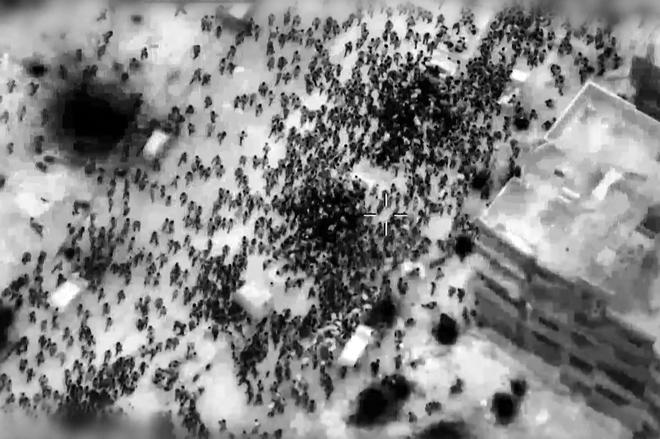
February 29, 2024: Israeli forces in war-torn Gaza opened fire on a crowd of Palestinians at an aid distribution point on February 29, killing at least 104 people and wounding over 700 according to Palestinian health officials. A witness told AFP that the violence unfolded when thousands of people desperate for food rushed towards aid trucks at the city’s western Nabulsi roundabout. This image grab from a handout video released by the Israeli Army shows what the Army says are Gazans around aid trucks in Gaza City.
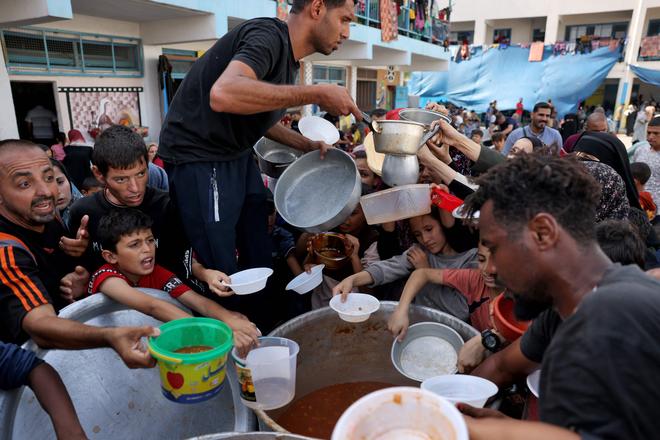
March 2024: The U.N. warned that Israel’s severe restrictions on aid into war-ravaged Gaza coupled with its military offensive could amount to using starvation as a “weapon of war”, which would be a “war crime”. The devastating war since Hamas’s October 7 attack on Israel has left roughly half of Gazans — around 1.1 million people — experiencing “catastrophic” hunger, the assessment said. In this photo from October 2023, Palestinian children receive food at a UN-run school in Rafah, on the southern Gaza Strip.
March 2, 2024: U.S. military C-130 cargo planes dropped food in pallets over Gaza. The airdrop was the first of many announced by President Joe Biden on. The aid was be coordinated with Jordan, which has also conducted airdrops to deliver food to Gaza. Since the war began on Oct 7, Israel barred entry of food, water, medicine and other supplies, except for a trickle of aid entering the south from Egypt at the Rafah crossing and Israel’s Kerem Shalom crossing.
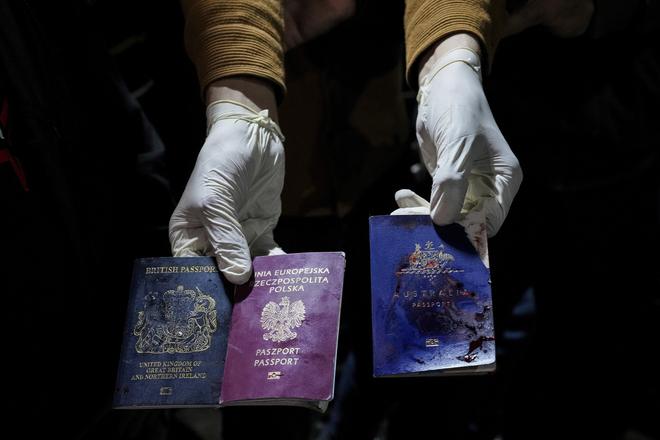
April 2, 2024: An Israeli airstrike kills six international aid workers with the World Central Kitchen charity and their Palestinian driver, hours after it brought a new shipload of food into northern Gaza. Footage showed the bodies of the dead at Al-Aqsa Martyrs Hospital in the central Gaza town of Deir al-Balah. Several of them wore protective gear with the charity’s logo. In this photo, a man displays the blood-stained British, Polish, and Australian passports.
April 13, 2024: Iran launched multiple drones toward Israel, marking the first time Iran had ever launched a full-scale military assault on Israel, despite decades of enmity dating back to the country’s 1979 Islamic Revolution. Iran had been threatening to attack Israel since an airstrike last week killed two Iranian generals in Syria. Israel has not commented on that attack, but Iran accused it of being behind it. This photo shows an anti-missile system operates after Iran launched drones and missiles towards Israel, as seen from Ashkelon, Israel.
May 7, 2024: An Israeli tank brigade seized control on of the Gaza side of the Rafah crossing with Egypt as Israel moved forward with an offensive in the southern city. Israeli tanks moved into the southern part of the city overnight, while warplanes bombed areas near the crucial Rafah border crossing, killing at least 23 Palestinians and injuring several others. The invasion, described by the U.S. as a “limited operation,” unfolded a day after the Israeli military ordered over a million people sheltering in Rafah to evacuate parts of the southern Gaza Strip city and relocate to an “expanded humanitarian zone” near Khan Younis, in preparation for an assault to “eradicate” Hamas. Photo shows Israeli military vehicles operate in the Gazan side of the Rafah Crossing.
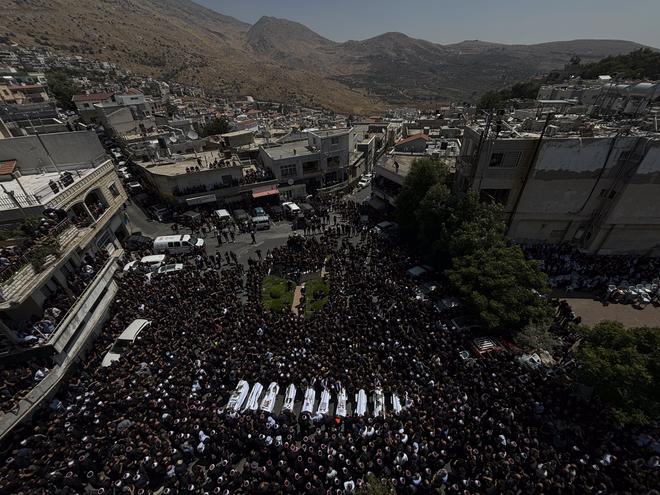
July 27, 2024: A rocket attack on a soccer field in the Israeli-controlled Golan Heights killed 12 children and wounded several others, hours after an Israeli airstrike on south Lebanon killed three members of the militant Hezbollah group. The strike, the deadliest attack on an Israeli target since the fighting between the two foes erupted in October 2023, raised fears of of a broader conflagration in the region. This photo shows mourners from the Druze minority surround the bodies of some of the 12 children and teens killed in a rocket strike at a soccer field, during their funeral, in the village of Majdal Shams, in the Israeli-annexed Golan Heights.
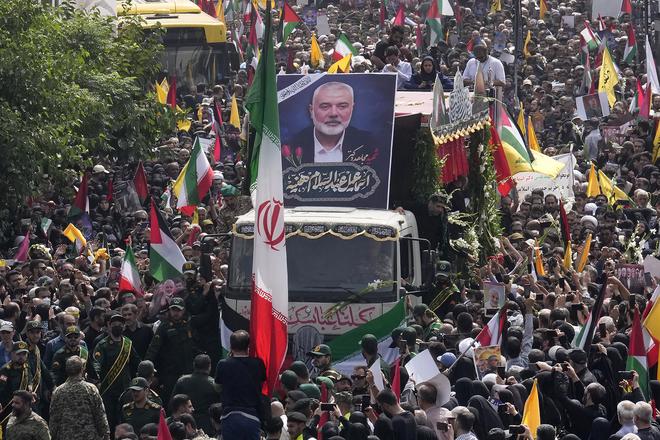
July 31, 2024: The political leader of the Palestinian militant group Hamas Ismail Haniyeh, was killed in an Israeli strike in Iran, where he had been attending the inauguration of the country’s new president. Haniyeh was elected head of the Hamas political bureau in 2017 to succeed Khaled Meshaal, but was already a well-known figure having become Palestinian prime minister in 2006. This photo shows Iranians follow a truck, center, carrying the coffins of Hamas leader Ismail Haniyeh and his bodyguard, during their funeral ceremony at Enqelab-e-Eslami (Islamic Revolution) Sq. in Tehran, Iran, on August 1, 2024.
August 28, 2024: Israel pressed on with a large-scale military operation in the occupied West Bank. Hamas said 10 of its fighters were killed in various locations, and the Palestinian Health Ministry reported an 11th casualty, without saying whether he was a fighter or a civilian. An Israeli vehicle operates on the road during an Israeli raid in Nour Shams camp in Tulkarm, in the Israeli-occupied West Bank, on August 29, 2024.
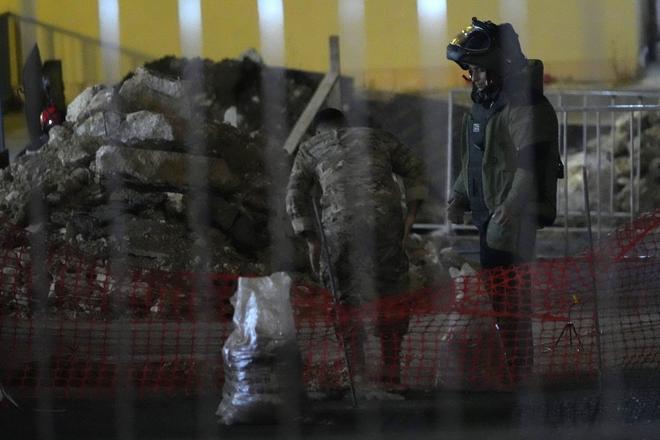
September 18, 2024: In a sophisticated, remote attack, pagers used by hundreds of members of Hezbollah exploded almost simultaneously in Lebanon and Syria killing at least nine people — including an 8-year-old girl — and wounding thousands more. A Lebanese army bomb disposal specialist wearing a protective gear prepares, with his comrade, to detonate a walkie-talkie that was found at the parking of the American University Hospital, in Beirut, Lebanon.
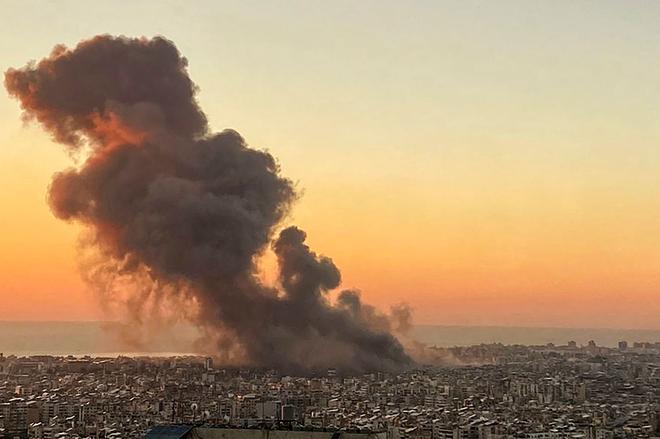
September 27, 2024: A wave of air raids hit Beirut’s southern suburbs early on as Israel stepped up attacks on Hezbollah, after a massive strike on the Iran-backed movement’s command centre that ended up killing the group’s leader Hassan Nasrallah. Photo shows smoke rising above Beirut’s southern suburbs on September 27, 2024.
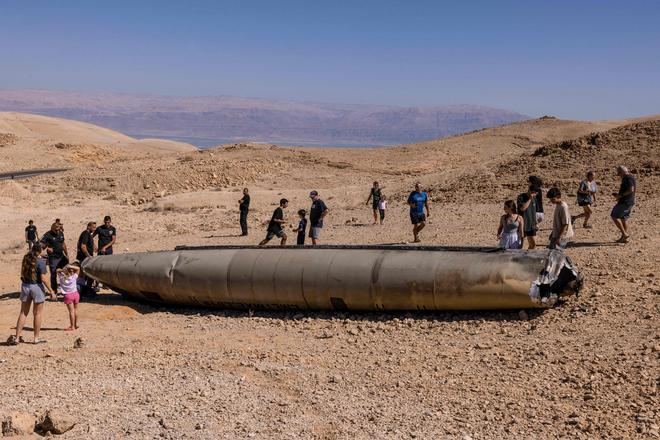
October 1, 2024: Iran fired a salvo of ballistic missiles at Israel in retaliation for Israel’s campaign against Tehran’s Hezbollah allies in Lebanon. Iran has vowed to retaliate following attacks that killed the top leadership of its Hezbollah allies in Lebanon. The firing of missiles came after Israel said its troops had launched ground raids into Lebanon, though it described the forays as limited. People are seen visiting the site of the remains of an Iranian missile in the Negev desert near Arad in the aftermath of an Iranian missile attack on Israel.
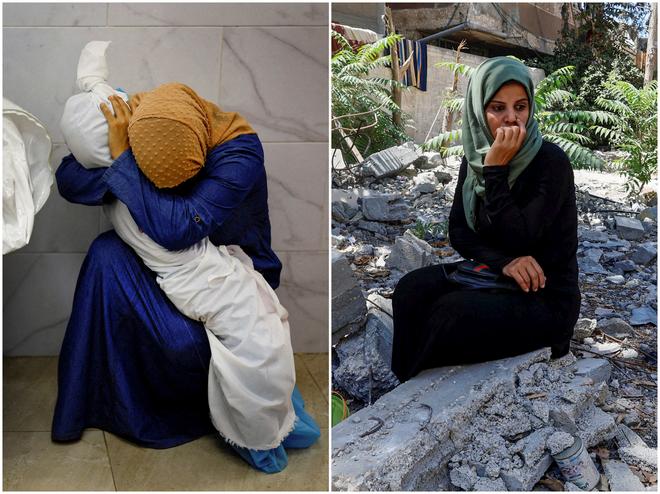
A combination picture shows Palestinian woman Inas Abu Maamar, 36, embracing the body of her 5-year-old niece Saly, who was killed in an Israeli strike, at Nasser hospital in Khan Younis in the southern Gaza Strip, on October 17, 2023 (L). Reuters photographer Mohammed Salem won the prestigious 2024 World Press Photo of the Year award for this image. In the second image Inas visits a damaged cemetery where Saly was buried, in Khan Younis in the southern Gaza Strip, on September 11, 2024.
1/3
Israel’s announcement of Sinwar’s death comes weeks after it assassinated Hezbollah chief Hassan Nasrallah in a strike in Lebanon, where the Israeli military has been at war since late September.
With Hamas already weakened more than a year into the Gaza war, Sinwar’s death deals an immense blow to the organisation.
U.S. President Joe Biden, whose government is Israel’s top arms provider, said: “This is a good day for Israel, for the United States, and for the world.”
“There is now the opportunity for a ‘day after’ in Gaza without Hamas in power, and for a political settlement that provides a better future for Israelis and Palestinians alike.”
‘Settling the score’
Militants also seized 251 hostages during the October 7 attack and took them into Gaza. Ninety-seven remain there, including 34 who Israeli officials say are dead.
Following the attack, Mr. Netanyahu vowed to defeat Hamas and bring home all the hostages.
Israel’s retaliatory campaign has killed 42,438 people in Gaza, the majority civilians, according to data from the health ministry in the Hamas-run territory, figures which the U.N. considers reliable.
Israeli military chief Herzi Halevi said: “We are settling the score with Sinwar, who is responsible for that very difficult day a year ago.”
He vowed the military would keep fighting “until we capture all the terrorists involved in the October 7 massacre and bring all the hostages home”.
Some Israelis hailed the news of Sinwar’s death as a sign of better things to come.
“I am celebrating the death of Sinwar, who has brought us nothing but harm, who has taken people hostage,” said one Israeli woman, Hemda, who only gave her first name.
Attending a Tel Aviv rally demanding the hostages’ release, 60-year-old Sisil, who also gave only her first name, said his killing presented a “once in a lifetime opportunity” for “a hostage deal to end the war”.
But whether the Hamas chief’s death will bring the end of the war any closer is unclear.
Warning that the hostages were in “grave danger”, Israeli military historian Guy Aviad said Sinwar’s killing was “a significant event… but it’s not the end of the war”.
Campaign group the Hostages and Missing Families Forum urged the Israeli government and international mediators to leverage “this major achievement to secure hostages’ return”.
According to a statement from Mr. Netanyahu’s office, Mr. Biden called him to congratulate him on Sinwar’s killing, with the two leaders vowing to seize “an opportunity to promote the release of the hostages”.
Mr. Netanyahu said Palestinian militants should free the hostages if they want to live.

Final moments
The Israeli military said Sinwar was killed in a firefight in southern Gaza’s Rafah, near the Egyptian border, while being tracked by a drone.
It released drone footage of what it said was Sinwar’s final moments, with the video showing a wounded militant throwing an object at the drone.
With the civilian toll in Gaza mounting, Israel has faced criticism over its conduct of the war, including from the United States.
In northern Gaza’s Jabalia, two hospitals said Israeli air strikes on a school sheltering displaced people killed at least 14 people, though the military reported that it had hit militants.
According to a UN-backed assessment, some 345,000 Gazans face “catastrophic” levels of hunger this winter.
Nearly 100% of Gaza’s population now lives in poverty, the UN’s International Labour Organization said, warning that the war’s impact on Gaza “will be felt for generations to come”.
War in Lebanon
Israel is also fighting a war in Lebanon, where Hamas ally Hezbollah opened a front by launching cross-border strikes that forced tens of thousands of Israelis to flee their homes.
Hezbollah said Thursday it was launching a new phase in its war against Israel, saying it had used precision-guided missiles against troops for the first time.
On the same day, Israel conducted strikes on the south Lebanese city of Tyre, where the militant group and its allies hold sway.
The Lebanese National News Agency reported strikes on the Bekaa Valley, after Israel had issued an evacuation warning for civilians there.
The Israeli military said five soldiers were killed in combat in southern Lebanon, taking to 19 the number of troop deaths announced since Israel began raids into Lebanon last month.
In Lebanon, the war since late September has left at least 1,418 people dead, according to an AFP tally of Lebanese health ministry figures, though the real toll is likely higher.
The war has also drawn in other Iran-aligned armed groups, including in Yemen, Iraq and Syria.
Iran on October 1 conducted a missile strike on Israel, for which Israel has vowed to retaliate.
Tehran’s mission to the United Nations said Thursday that Sinwar’s killing would lead to the strengthening of “resistance” in the region.
Published – October 18, 2024 06:16 am IST




